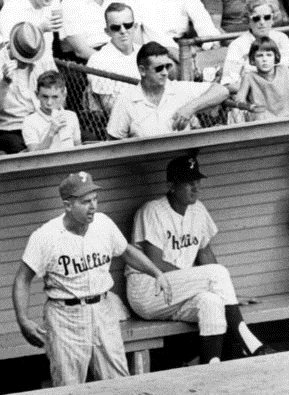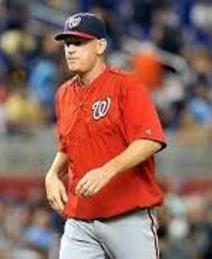|
I started watching baseball in 1946 when my dad took me to Ebbets Field and the Dodgers beat the Reds. I was seven.
Since then, I have never seen “my team” play a series like the one the Mets just played in Washington. (I can afford to gush; I’m retired, and do not have to pretend at neutrality.) I have, however, seen another team play a dismal three-game series like the one the Nationals just did. More about this in a moment. My Brooklyn Dodgers were so good they were expected to win (except in the World Series against the Yankees.) They were better known for disasters – Bobby Thomson’s homer in 1951 being just one of them. The Mets came along in 1962 and have had epic seasons and stunning games, including two straight (Koosman and Seaver) over the Cubs at home on Sept. 8-9, 1969, to move within half a game of first place. But even those surging Mets never won three straight over their closest competitor, coming from behind in all three when logic said they were done for the day. Of course, the Nationals were already a sodden team going into this week. One of the Mets’ greatest gifts this year was the refusal of Washington management to fire Matt Williams when the team skulked for half a season. The hapless manager brought in Drew Storen Wednesday night after his failure of nerve and location on Tuesday. Any sentient manager would have invented a blister on one of Storen’s fingers; the term “unavailable” was made for that guy. Instead, Cespedes hit a two-run homer. After thinking about it overnight, I realized I had witnessed a contending team losing three straight in September. I was in chilly St. Louis in 1964 as the Phillies, who had lost seven straight, lost three more, more or less straightforwardly, and fell out of first place. To be fair: some of the Phillies’ stars were hurt; their pitching staff was shot; their best player, John Callison, had a fever so bad that Bill White, the Cardinals’ first baseman, helped him on with a jacket, rarely allowed for any runner but a pitcher. The Cardinals whooshed past the Phils, into first place, toward a marathon victory over the Yanks in the World Series. Gene Mauch of the Phillies gets the blame for overworking his pitching staff; he was a remote and intelligent man, part Ahab, part Queeg, but I cut him much more slack than I do Matt Williams. Many teams have their sagas of comebacks and failures but I have never seen anything quite like those three games in DC this week. Will we someday talk about Granderson the way we do about Clendenon? Flores the way we do about Weis? Familia the way we do about McGraw and Orosco? No matter what happens, the last three games deserve Casey Stengel’s adjective: Amazing.
Brian Savin
9/10/2015 09:07:58 pm
i fear I'm writing too many comments, but in this case I refuse to restrain myself. This essay is raw meat to a hungry fan. It is a great joy to read on every level -- insight, historical perspective, happy memory jogging, cleverness, shared fan enthusiasm, writing skill -- I better stop and do something else during this rain delay.
George Vecsey
9/10/2015 11:10:51 pm
Brian, thanks so much. Your comments -- all comments -- always welcome. We waited out the rain delay -- worth it, through five innings, as I type this. Best, GV
bruce
9/23/2015 02:29:56 pm
George, Comments are closed.
|
Categories
All
|











